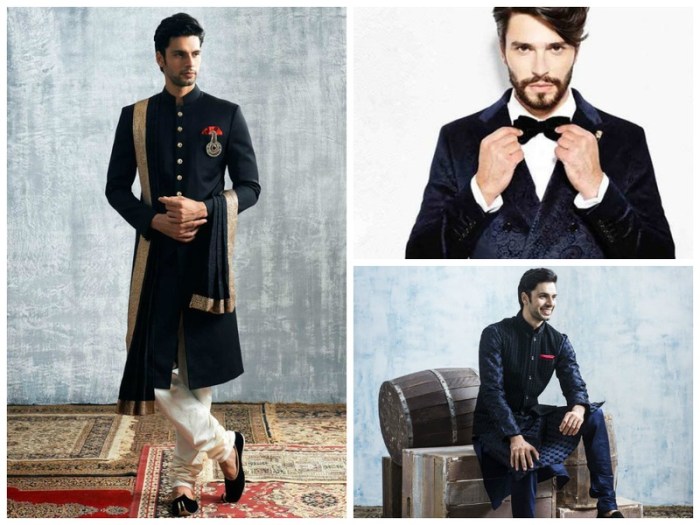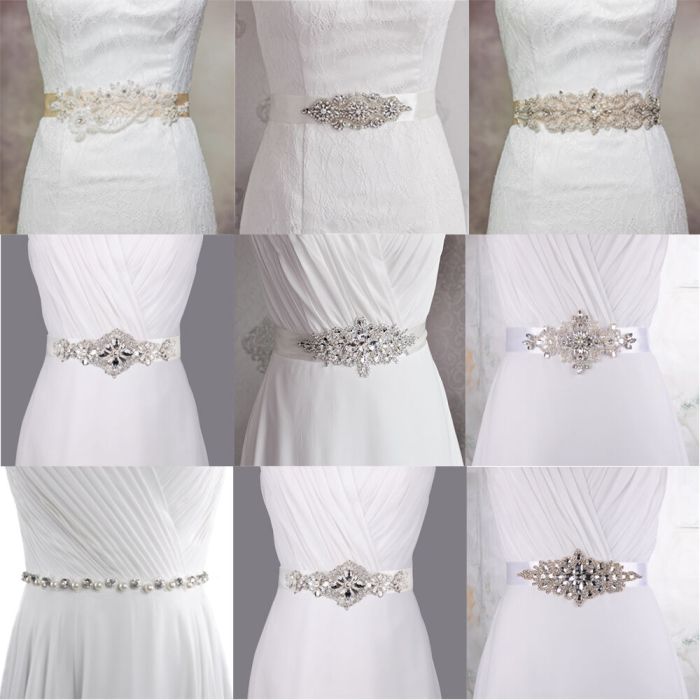Styles of Gents Wedding Dresses in Indian Culture
Gents wedding dress in indian – Indian men’s wedding attire boasts a rich tapestry of styles, varying significantly across the country’s diverse regions. These styles reflect centuries of tradition, evolving alongside modern influences to create a unique blend of heritage and contemporary fashion.
Regional Variations in Men’s Wedding Attire
The choice of attire often depends heavily on the region and community. For example, a groom from Rajasthan might opt for a vibrant bandhgala, while a groom from South India might choose a traditional dhoti and kurta. The styles differ in cut, embellishments, and fabrics used.
Traditional versus Modern Interpretations
Traditional styles, often passed down through generations, maintain their cultural significance. However, modern interpretations adapt these styles to contemporary tastes, incorporating new fabrics, colors, and design elements. This creates a balance between respecting heritage and embracing modern trends.
Evolution of Men’s Wedding Fashion in India
Over the past few decades, Indian men’s wedding fashion has undergone a significant transformation. The adoption of Western influences, coupled with the rise of designer wear, has led to a wider array of choices. While traditional elements remain crucial, modern designs often incorporate slimmer fits, bolder colors, and innovative embellishments.
Styles, Regional Origins, and Key Features
| Style | Regional Origin | Key Features | Example |
|---|---|---|---|
| Sherwani | North India | Long coat, often embroidered, buttoned front | A deep red sherwani with intricate gold embroidery, paired with churidar pajamas. |
| Bandhgala | North India | Close-fitting coat, Nehru collar, often double-breasted | A black bandhgala with subtle silver detailing, worn with fitted trousers. |
| Dhoti and Kurta | South India | Traditional wrap-around garment (dhoti) paired with a long shirt (kurta) | A cream-colored silk kurta with a contrasting red dhoti, accessorized with a silk scarf. |
| Achkan | North India | Long, buttoned coat, often with intricate embroidery | An ivory achkan with delicate floral embroidery, complemented by a silk safa (turban). |
Fabrics and Colors Used in Indian Gents Wedding Dresses
The fabrics and colors used in Indian men’s wedding attire hold significant cultural and symbolic meaning, adding depth and richness to the overall aesthetic. The choices often reflect regional preferences, family traditions, and the wedding’s theme or season.
Commonly Used Fabrics
Several fabrics are favored for their luxurious feel, drape, and durability. Silk, brocade, velvet, and jacquard are common choices, often embellished with intricate embroidery or embellishments.
Significance of Color Choices
Color holds deep cultural significance in Indian weddings. Red, for instance, symbolizes prosperity and good fortune, while gold represents wealth and auspiciousness. Other colors, such as shades of green, blue, and ivory, are also popular choices, often depending on the specific region and personal preference.
Cultural and Symbolic Meanings of Colors
Red signifies auspiciousness and prosperity. Gold represents wealth and divinity. White or cream often denotes purity. Shades of green and blue are associated with serenity and peace. These symbolic meanings are often considered when choosing a wedding outfit.
Color Palettes for Different Wedding Themes
A traditional wedding might feature rich reds and golds, while a modern celebration could incorporate softer pastels or jewel tones. Winter weddings might opt for deeper, richer colors, while summer weddings might favor lighter, brighter hues.
Accessories and Adornments for Indian Gents Wedding Attire

Source: weddingz.in
Accessories play a vital role in completing the groom’s look, adding a touch of elegance and reflecting cultural traditions. These range from traditional headwear to intricate jewelry and elegant footwear.
Traditional and Modern Accessories
Traditional accessories include turbans (safa), necklaces (mala), bracelets (kada), and ornate footwear (mojris). Modern interpretations incorporate elements like cufflinks, pocket squares, and stylish belts, creating a more contemporary aesthetic while still honoring tradition.
Cultural Significance of Accessories
The safa (turban), for example, holds significant cultural importance in many regions, often representing status and family heritage. Jewelry pieces can be heirlooms, passed down through generations, carrying sentimental value alongside their aesthetic appeal.
Visual Representation of a Groom Adorned with Accessories
Imagine a groom in a rich maroon sherwani, his head adorned with a gold-and-red safa. A delicate mala rests on his chest, complementing his ornate kada bracelets. He sports elegant black mojris, completing the regal look with a subtle yet impactful statement.
Accessories Categorized by Type
- Headwear: Safa (turban), pagdi (turban), topi (cap)
- Jewelry: Mala (necklace), kada (bracelet), rings, cufflinks
- Footwear: Mojris (traditional shoes), juttis (embroidered shoes), formal shoes
The Role of the Sherwani in Indian Gents Wedding Fashion
The sherwani stands as a cornerstone of Indian men’s formal wear, particularly in wedding celebrations. Its rich history and enduring elegance make it a timeless choice for grooms.
Historical Background and Cultural Importance
Originating in the Mughal era, the sherwani has evolved into a symbol of sophistication and cultural heritage. Its long, coat-like design, often adorned with intricate embroidery, reflects a blend of Persian and Indian influences.
Different Styles and Variations of Sherwanis
Sherwanis come in various styles, including those with mandarin collars, Nehru collars, or even more modern, western-inspired cuts. Embellishments can range from subtle embroidery to lavish beadwork and sequins.
Sherwani Compared to Other Indian Formal Wear
Compared to the achkan or bandhgala, the sherwani is typically longer and more flowing, offering a more regal and grand appearance. It stands apart in its inherent elegance and the versatility of its designs.
Design Elements Reflecting Regional Styles
The embroidery and embellishments on a sherwani often reflect the regional style of its origin. A sherwani from Rajasthan might feature bold colors and intricate mirror work, while one from Lucknow might showcase delicate chikankari embroidery.
Modern Trends in Indian Gents Wedding Dress Design: Gents Wedding Dress In Indian
Modern trends in Indian men’s wedding fashion demonstrate a fascinating interplay between tradition and contemporary influences. Designers are innovating with fabrics and techniques, creating unique and stylish ensembles.
Current Trends in Men’s Wedding Fashion
Current trends include slimmer fits, bolder color choices, and the incorporation of Western elements like structured jackets and tailored trousers into traditional outfits. The use of unconventional fabrics and textures is also gaining popularity.
Influence of Western Styles on Traditional Attire
Western influences are subtly integrated into traditional designs. For example, structured jackets are paired with traditional kurtas, or slim-fit trousers replace churidars, creating a modern yet culturally relevant look.
Visual Representation of Three Modern Trends
Trend 1: A groom in a midnight blue velvet sherwani with a mandarin collar, paired with sleek black trousers. Trend 2: A groom in a light beige linen kurta with intricate embroidery, teamed with tailored beige trousers and brown leather loafers. Trend 3: A groom in a deep green bandhgala with a subtle paisley print, worn with fitted trousers and a patterned pocket square.
Innovation with Traditional Fabrics and Techniques
Designers are experimenting with traditional techniques like bandhani, batik, and Kalamkari, applying them to modern silhouettes and fabrics. This creates a unique blend of heritage and contemporary design, resulting in stunning and innovative wedding attire.
Budget Considerations for Indian Gents Wedding Attire
The cost of a groom’s wedding outfit can vary significantly depending on several factors. Understanding these factors can help in making informed decisions and finding affordable yet stylish options.
Range of Costs Associated with Different Styles
The cost can range from a few thousand rupees for simpler outfits to several lakhs for heavily embellished designer pieces. The fabric, level of embellishment, and designer’s reputation all significantly influence the price.
Factors Influencing the Overall Cost
Several factors contribute to the overall cost of a groom’s wedding outfit. Careful consideration of these aspects can help in managing the budget effectively.
Tips for Finding Affordable Yet Stylish Options
Consider renting instead of buying, opting for simpler embellishments, or choosing less expensive fabrics while maintaining a stylish look. Shopping during off-season sales can also yield significant savings.
Factors Influencing Cost (Bulleted List), Gents wedding dress in indian
- Fabric choice (silk, brocade, etc.)
- Level of embellishment (embroidery, beadwork, etc.)
- Designer’s reputation and brand
- Customization and tailoring costs
- Accessories (jewelry, footwear, etc.)
Popular Questions
What is the average cost of a gents wedding dress in India?
Choosing the perfect gents wedding dress in Indian weddings often involves a careful consideration of tradition and style. The groom’s attire plays a significant role in the overall aesthetic, and finding the right balance can be key. For inspiration on complementary formal wear, you might find helpful resources on websites like formal dresses for a wedding , which offer a wide range of options.
Ultimately, the selection of a gents wedding dress in Indian culture reflects personal taste while honouring customary traditions.
The cost varies greatly depending on the fabric, embellishments, and designer. Expect a wide range, from a few thousand rupees to several lakhs.
Where can I find a good tailor for a custom-made sherwani?
Local tailors in larger cities are a good option. Online searches for “sherwani tailors [city name]” can also yield promising results. Reviews and recommendations are crucial.
How far in advance should I start planning my wedding attire?
At least 6-8 months is recommended, especially for custom-made garments to allow for fittings and alterations.
Can I rent a wedding outfit instead of buying one?
Yes, many rental shops offer a variety of sherwanis and other traditional outfits at various price points.

